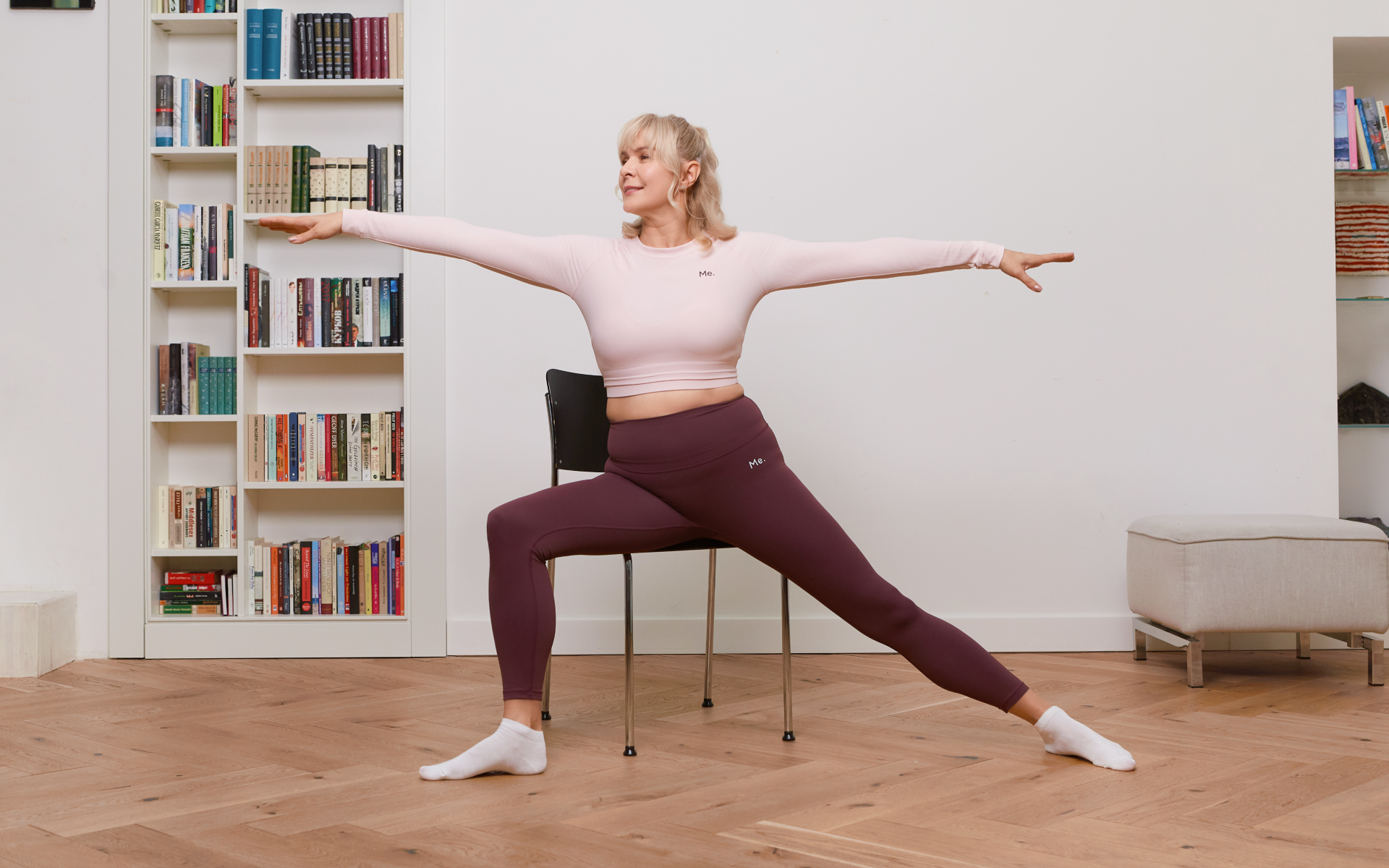The fat-burning zone is the range of heart rate at which your body primarily uses stored fat as fuel. This zone typically falls between 60-70% of your maximum heart rate. You’ve probably seen this on cardio machines at the gym or on fitness apps – a heart rate chart showing different zones and their corresponding benefits.
Many people believe that staying in the fat-burning zone for longer periods of time will lead to maximum fat loss. However, this isn’t entirely true. In fact, there are a few key factors to consider when determining how long to stay in the fat-burning zone for maximum fat loss.
Here’s a breakdown of what the fat-burning zone is, how it works, and how long you should stay in it for optimal results.
How Long Does it Take for Fat-Burning to Kick in?
You’re always burning a combination of different fuels for energy, but the percentages will vary, in part based on the intensity of the activity.
There are typically five target heart rate zones (1) (2):
- Zone 1 (50-60% of maximum heart rate): This is the target range for warm-up and recovery.
- Zone 2 (60-70% of maximum heart rate): This is the target zone for aerobic and base fitness work.
- Zone 3 (70-80% of maximum heart rate): This is the target zone for aerobic endurance work.
- Zone 4 (80-90% of maximum heart rate): This is the intense anaerobic capacity zone where you start to feel out of breath.
- Zone 5 (90-100% of maximum heart rate): This is our maximum effort zone where you can only sustain activity for short periods of time.
Each zone has its own benefits and plays a role in your overall fitness. In the lower intensity zones 1 and 2, a higher percentage of your calories burned will be coming from fat, although activities in the higher intensity zones will burn more calories overall.
Intense sweat sessions, working weight loss tips, lip-smacking recipes come in one package with the BetterMe app. And all of it is at your fingertips, start transforming your life now!
How Long Does Your Body Stay in Fat-Burning Mode?
Your body stays in the fat-burning zone as long as your heart rate stays within that target range. For example, when you’re asleep, your heart rate is typically below the fat-burning zone, but once you start moving and your heart rate increases, you enter the fat-burning zone. When you walk, jog, or do any other low- to moderate-intensity exercise for 30 minutes, your body will continue to use a higher proportion of fat as fuel until your heart rate goes above this zone (2)
Fat-burning is an aerobic, or oxygen-dependent process, and it takes time for your body to shift into this mode. This is why the fat-burning zone is often associated with longer-duration exercises such as walking or jogging.
However, as the intensity of your workout increases, your body starts using more carbohydrates for energy. This is because intense exercise requires a quick source of fuel and fat is not efficient in providing that.
Think of it this way – when you’re walking for a while, your body can take its time to convert fat into energy, but when you’re sprinting, your body needs fuel quickly and fat cannot provide that.
Therefore, the length of time your body stays in the fat-burning zone depends on the intensity of your workout and how long you maintain that intensity.
To make sure you’re in the fat-burning zone during your workout, you can calculate your target heart rate using the following formula (3):
- Maximum Heart Rate (MHR) = 220 – Age
- Fat-Burning Zone = MHR x 0.6 to MHR x 0.7
For example, if you’re 30 years old, your maximum heart rate would be 190 beats per minute (bpm). Therefore, your fat-burning zone would be between 114 bpm and 133 bpm (2).
In some cases, your body can continue to burn fat even after you’ve stopped exercising. This is known as the “afterburn effect” or excess post-exercise oxygen consumption (EPOC) (4). It’s a period of increased metabolism and calorie burning after exercise that may last anywhere from 15 minutes to 48 hours.
Studies have suggested that higher intensity and anaerobic activities have a greater EPOC effect than steady-state aerobic exercise (4). This can include resistance exercise or high-intensity interval training (HIIT). This means that even though HIIT workouts may be shorter in duration, they can lead to just as much fat-burning as longer duration exercises in the fat-burning zone.
In our previous post, Does Getting a Massage Burn Calories, we discussed how massages can help with recovery after intense exercise. This is particularly important for HIIT workouts as they may cause more muscle soreness than steady-state exercises in the fat-burning zone.
What Zone Is Best for Fat Loss?
Any zone that contributes to a calorie deficit can lead to fat loss. At the end of the day, it all comes down to burning more calories than you consume. However, when it comes to specifically targeting fat loss, the fat-burning zone can be beneficial for the following reasons;
- Longer duration: The fat-burning zone is associated with longer-duration exercises, which can be easier for beginners or those with injuries to maintain (5).
- Lower intensity: The lower intensity of the fat-burning zone also makes it more sustainable for longer periods of time (5). This means that you can stay in this zone for a longer duration without feeling completely exhausted or out of breath, which makes it a great option for individuals who are just starting their fitness journeys.
- Fat as fuel: Unlike higher-intensity zones where your body primarily uses carbohydrates for fuel, the fat-burning zone specifically targets stored fat as energy. Therefore, staying in this zone can help with fat loss, although all exercise will contribute to fat loss (5).
While staying in the fat-burning zone for longer periods of time may seem like a logical choice for maximum fat loss, it’s not necessarily the most effective approach.
Your body adapts to exercise over time, so if you constantly stay within the same heart rate range, your body becomes more efficient at using fat as fuel. This means that you may not see the same results as when you first started exercising in the fat-burning zone.
Here are a few other things to keep in mind:
- Diet: No amount of time spent in the fat-burning zone will make a difference if your diet is not in check. To lose weight, you need to be in a calorie deficit, which means consuming fewer calories than you burn (7).
- Muscle mass: The more muscle mass you have, the higher your resting metabolic rate (RMR). This means that even at rest, your body burns more calories. So incorporating strength training into your workout routine is important for long-term fat loss (6).
- Variety: Your body is adaptable and can get used to doing the same type of exercise over time. It’s important to mix up our workouts and incorporate high-intensity intervals or strength training to challenge your body and continue burning fat (8).
Instead of solely focusing on staying in the fat-burning zone for a certain amount of time, it’s important to find a balance between low- and high-intensity exercises.
Here are a few tips to help you find that balance:
Find an Activity You Can Sustain
How long and how consistently you perform an exercise is more important than the intensity. Choose an activity that you enjoy and can sustain for a longer duration, whether this is walking, cycling, or dancing. The longer you’re active, the more calories you’ll burn and the greater impact it will have on fat loss. Enjoyment also influences consistency. Consistently engaging in physical activity is the key to seeing results.
Vary Your Workouts
Mixing up your workouts keeps things interesting and also challenges your body in different ways. Try incorporating both low- and high-intensity exercises into your routine to prevent adaptation.
According to expert guidelines, you should do at least 150 minutes of moderate-intensity exercise or 75 minutes of high-intensity exercise per week, depending on your fitness goals. It’s also recommended that you do muscle-strengthening activities at least two days a week.
Check out this Bodyweight Cardio Exercises guide that provides a great mix of high-intensity and low-intensity exercises that can be done anywhere without any equipment.
Monitor Your Heart Rate
Tracking your heart rate during workouts can give you insight into how your body responds to different activities. You can use a fitness tracker or simply count your pulse for 10 seconds and multiply it by six to get your beats per minute. This will help you stay within the target heart rate range for optimal fat-burning.
Incorporate High-Intensity Intervals
High-intensity interval training or HIIT can be a great way to add intensity to your workouts and increase the EPOC effect (5). This involves alternating short bursts of high-intensity exercise with periods of lower intensity or rest.
You can incorporate this into any type of cardio workout, such as running, cycling, or bodyweight exercises such as burpees or jumping jacks. More importantly, it can be done in a shorter amount of time than traditional low-intensity exercises.
Don’t Forget About Strength Training
Strength training helps build muscle mass and increases your RMR, which leads to more calories burned at rest (7). You should aim to incorporate strength training exercises that target all the major muscle groups at least 2-3 times a week.
Focus on Overall Fitness
While the fat-burning zone is important for fat loss, you shouldn’t neglect other aspects of your fitness such as strength training and flexibility. Building muscle can also help increase your metabolism, which leads to more efficient fat-burning, even outside of the fat-burning zone. Experts recommend including at least two days of strength training per week for optimal results.
Eat for Fat Loss
Fat loss is not just about exercise – nutrition plays a crucial role too. Make sure to fuel your body with nutritious foods from all food groups and watch your portion sizes. Staying in a caloric deficit (consuming fewer calories than you burn) is the key to fat loss (8), regardless of how long you stay in the fat-burning zone.
Check out How Many Calories Do I Burn a Day Doing Nothing? to get a better understanding of how much you need to cut down on your daily calorie intake.
Whether you’re looking to simply pep up your fitness routine, jazz up your diet with mouth-watering low-calorie recipes or want to get your act together and significantly drop that number on your scale – BetterMe app has got you covered! Improve your body and revamp your life with us!

FAQs
Which body part loses fat first?
There are no specific body parts that lose fat first. It varies from person to person and is based on genetics, hormones, and overall body composition. It’s impossible to spot reduce fat in one specific area of the body, so it’s important to focus on losing overall body fat through a combination of diet and exercise.
How do I know I’m burning fat?
The best way to know if you’re burning fat is by tracking your progress over time. This can include taking measurements, photos, and monitoring changes in body composition. You can also track your heart rate during workouts to make sure you’re staying within the target heart rate range for optimal fat-burning.
How do I trick my body into fat-burning mode?
You can’t trick your body into fat-burning mode as it’s a natural process that occurs when you’re in a caloric deficit. It’s important to maintain a healthy diet and be consistent with your workouts to see results.
What are the stages of fat-burning?
The stages of fat-burning are as follows:
- The body enters a state of caloric deficit, which results in the breakdown of stored fat for energy.
- As fat is broken down, fatty acids and glycerol are released into the bloodstream.
- Fatty acids are then used by muscles and other tissues for energy production through a process called beta-oxidation.
- Glycerol can be converted into glucose and used as an additional source of energy.
- Over time, with consistent caloric deficit and exercise, body fat percentage decreases, which leads to visible changes in body composition.
The Bottom Line
The fat-burning zone is a useful tool when it comes to fat loss, but it’s not the only factor to consider. The length of time your body stays in this zone depends on the intensity and duration of your workout. It’s important to find a balance between low- and high-intensity exercises for maximum fat loss results. Maintaining a calorie deficit, incorporating strength training, and varying your workouts are also important for achieving your desired fitness goals.
DISCLAIMER:
This article is intended for general informational purposes only and does not serve to address individual circumstances. It is not a substitute for professional advice or help and should not be relied on for making any kind of decision-making. Any action taken as a direct or indirect result of the information in this article is entirely at your own risk and is your sole responsibility.
BetterMe, its content staff, and its medical advisors accept no responsibility for inaccuracies, errors, misstatements, inconsistencies, or omissions and specifically disclaim any liability, loss or risk, personal, professional or otherwise, which may be incurred as a consequence, directly or indirectly, of the use and/or application of any content.
You should always seek the advice of your physician or other qualified health provider with any questions you may have regarding a medical condition or your specific situation. Never disregard professional medical advice or delay seeking it because of BetterMe content. If you suspect or think you may have a medical emergency, call your doctor.
SOURCES:
- How to target heart rate training zones effectively (2023,colostate.edu)
- Target Heart Rates Chart (2021,heart.org)
- HOW TO CALCULATE AND EFFECTIVELY USE HEART RATE ZONES (2019,fitnesseducation.edu.au)
- What Is EPOC? (And Why It Matters) (2023,clevelandclinic.org)
- The Truth of the Fat Burning Zone (2020,mountelizabeth.com.sg)
- Increasing muscle mass to improve metabolism (2013,nih.gov)
- Optimal Diet Strategies for Weight Loss and Weight Loss Maintenance (2021,nih.gov)
- Cross Training (orthoinfo.aaos.org)







